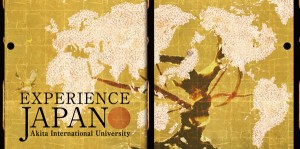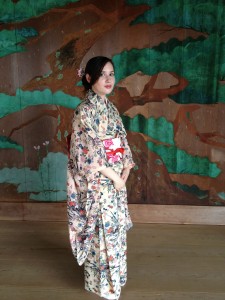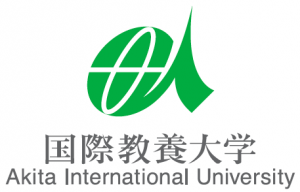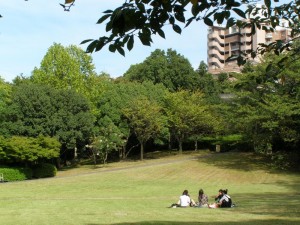Japanese
202 Japanese Literature
This course is an introduction to Japanese literature from the earliest times to the present. While introducing great works and important genres of Japanese literature (in English translation), the course will explore various issues central to this literature, such as love, death, national identity, nature, gender and literary genre, while placing the works in their historical and cultural contexts.
203 Topics in East Asian Literature
Selected topics in East Asian Literature; e.g., Chinese Women in Literature, Modern Japanese Literature, Pre-Modern Japanese Literature.
204 Topics in East Asian Cinema
This course will introduce students to the cinematic traditions of China, Japan, Korea or a combination of the above. Possible topics may include: surveys of film in these countries, adaptation, women in East Asian film, and genre films.
205 Topics in East Asian Humanities
Selected topics in East Asian humanities: e.g., Japanese Women, Modern China through Film, Women’s Images in Chinese Film, Japanese Architecture.
206 Topics in East Asian Society
Selected topics in East Asian society: e.g., Modern Japanese Culture, Chinese Society, Chinese Emperors, The Chinese City.
236 Japanese Society
This course is an introduction to contemporary Japanese society. The course examines what everyday life is like in Japan from anthropological and historical perspectives. It explores such major social institutions as families, gender, communities, workplaces, and belief systems. The course focuses as well on the ways in which modernization has affected these institutions and the identities of Japanese people.
259 Law, Politics, and Society in Asia
This course examines the interaction between law, legal institutions and citizens in China, Japan and India. Covering history and the contemporary scene, the course focuses on how law works in practice and is understood and used by ordinary people in Asia. It covers areas such as marriage and divorce, the legal profession, lost property, civil rights, the environment, sexuality, mediation, land development and property, among others. Comparisons between the United States and Asia, as well as between Asian countries, will be emphasized.
305 Colloquium in East Asian Humanities
Intensive discussion of topics in East Asian Humanities. Designed for majors and for non-majors who have taken courses in related fields. This course satisfies the Comparative Civilizations and, depending on the topic, Division I.A. or Division I.C. distribution requirement. Topics include: Chinese Culture in “The Dream of the Red Chamber”, Strange Stories from a Chinese studio, Issues of Identity among Asian-Americans, the films of Akira Kurosawa, Images of Japan in the West, Issues of Love and Gender in Modern Japanese Literature, Kyoto School Philosophy, Japanese Landscape Architecture.
306 Colloquium on East Asian Society
Intensive discussion of topics on East Asian Society. Designed for majors and for non-majors who have taken courses in related fields. This course satisfies the Division II and Comparative Civilizations distribution requirements. Topics include: Beijing and Shanghai: A Tale of Two Cities, Sino-Japanese Wars, Chinese Emperors, the Chinese Diaspora, Marriage Laws in Modern China, Meiji Restoration, Aristocracy in Ancient Japan, Samurai Culture, Japanese Constitutions.
208 Japan Practicum
An intensive in-country introduction to Japanese culture and society. The course is particularly suited to students who have not had a chance to take two years of Japanese language instruction and/or are not able to take advantage of the College’s semester or year-long program in Japan. The course will introduce students to various aspects of Japanese society and culture and will link classroom study to outside-the-classroom and on-site experiences. The latter will include academic excursions to places of historical and cultural interest as well as to institutions like factories, schools, businesses, community organizations, and recreation areas that exemplify contemporary Japanese life. Course content will vary with the particular expertise and interests of the instructor(s) and curricular needs.
This course fulfills the DIV II social sciences and Comparative Civilizations distribution requirements.
Minor
Five courses: Four Japanese language courses beyond Intermediate JPNS 212. One additional, 300-level (or higher) Japanese language course or one non-language East Asian course on Japan.
NOTE: The Japanese minor is open to non-East Asian Studies majors only.
- *101, 102 Elementary Japanese
These courses establish the basic language skills including listening, speaking, reading and writing. These courses also provide students with a brief overview of Japanese culture.
- *211, 212 Intermediate Japanese
The aim of these courses is the mastery of the basic structure of Japanese language and communicative skills. The student will have an opportunity to get to know more of Japanese culture.
Prerequisite: 102 or permission of the instructor.
- *231, 232 Advanced Japanese
The emphasis in these courses is placed on enhancing the students’ fluency and acquiring increasingly creative skills through composition, oral presentation and discussion.
Prerequisite: 212 or permission of the instructor.
- *361, 362 Advanced Japanese II
The emphasis in these courses is placed on polishing and refining the students’ language skills. Emphasis is placed on covering more sophisticated materials such as newspapers, magazine articles, film and literature.
Prerequisite: 232 or permission of the instructor.
 Samurai and Geisha: Fact and Fiction
Samurai and Geisha: Fact and Fiction





